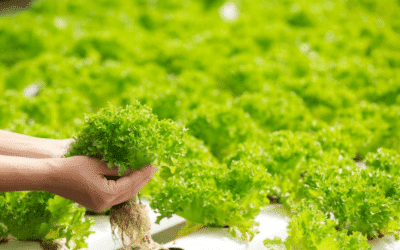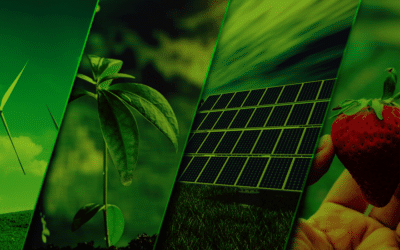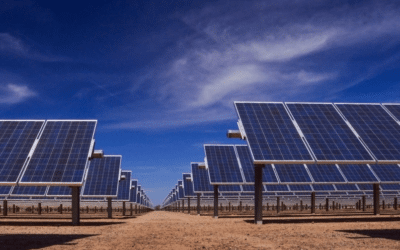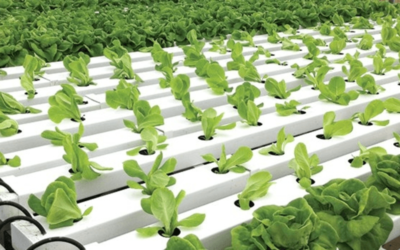Being involved in the construction of your own home is exciting. You’re calling the shots and it’s only natural that when you’re making that kind of investment that you want everything to be perfect. And it stands to reason that what you chose now will influence your lifestyle and that of your family for years to come.
It’s no different when building a green and eco friendly living home. In fact, it requires even more thought and planning to build a home that’s not just beautiful, practical and cost-effective, but in harmony with the environment too. So where do you start? This green smart home checklist should give you something to think about.
Location, location, location
When shopping for a new home, most people consider location to be the most important factor. You want to be close to your place of work, in an area with convenient shopping, entertainment and schooling. It also needs to be safe and have the right infrastructure in place for comfortable living.
But when you’re buying or building a green and eco friendly living home you have to take it one step further. Look at the site conditions of your future home and whether it has the necessary qualities such as enough space for rainwater harvesting tanks and access to clean air and water.
Building position and orientation
You’ll want to orientate your home in the best position to take advantage of what the site you’ve chosen has to offer. In the southern hemisphere, a north-facing position is best as it allows you to make use of sunlight to warm your home in the winter and keep it cool in the summer.
Knowing where to place your windows, what size they should be and what the best spot for solar panels would be are all crucial elements when it comes to building a home that is energy efficient. After all, the purpose of a green and eco friendly living home is to work with nature and not against it. Getting the basics right from the start will have a significant impact on the practical operating of your home and determine just how efficient it can be.
Get savvy with your layout
This is an important part of turning your green smart home dream into a reality. When planning the layout of your home take the orientation of the building into consideration. Think about which rooms need natural light and heat to reduce your electricity costs. Look at the flow of air around the building and how you can use natural ventilation to your advantage.
The way you layout your home can go a long way to reducing your construction costs too. So don’t focus only on the aesthetic. Be practical about how your home will function now and in the future.
Choose the right building materials
You might think that green construction is all about using materials that are sustainable and don’t poison or damage the environment. And while that is certainly true to some extent, it’s essential to be practical about this element.
All materials have strengths and weakness when it comes to being eco friendly living. While the production of a certain material may be more sustainable, it might not be very durable. In which case, you’d have to replace it or maintain more often. And that may have a negative impact on the environment. For example, bamboo is an excellent substitute for traditional wooden structures in a home such as counter tops and even flooring. It’s a fast growing plant which means it’s more sustainable than other woods. But the finishes used on bamboo may contain toxic chemicals to ensure its durability. Find out as much as you can about the sourcing and manufacturing of various construction materials before you commit to using them in your design.
Try to achieve a balance between using materials that are sturdy, don’t require much maintenance, are sustainable or recyclable and aren’t produced using methods and techniques that are harmful to the environment. Building a green and eco friendly living home requires you to think farther into the future than you would with any other type of home. The initial layout will cost more so you should think of it as a long-term investment. Choose wisely now and you’ll reap the benefits well into the future.
Add green features for future cost savings
A home may be considered green when it incorporates technologies that reduce or eliminate your reliance on the normal infrastructure associated with housing. So make sure these elements are part of your initial plans:
- Insulation:A home that is properly insulated is easy to keep cool in summer and warm in winter. This means you’ll draw less power from the grid to live, work and play in comfort. Insulation should be built into the structure, between exterior walls and in the ceiling and flooring.
You won’t need to use an air-conditioner or heaters to maintain the temperature of your home throughout the year. Not only will you save on electricity, but you’ll reduce the demand on the grid and reduce the risk of outages which affect everyone.
- Rainwater harvesting:With green and eco friendly living homes these large tanks can be hidden underground reducing the amount of space they need and ensuring that your property looks as attractive as a regular home. It also means you’ll have a supplementary supply of water available for flushing toilets or watering your garden.
By making use of rainwater, you’re not only saving a precious resource you’re also saving costs.
- Solar panels:Can a home really be green if it doesn’t have solar panels? These are essential for anyone who wants to reduce their reliance on the grid and power their own home. The size, type and number of panels depend on several factors. Careful planning will ensure that you have enough power available for necessities or to run your full household, including for your lights, TV and appliances.
And given the constant sunshine available, relying on solar panels to power your home isn’t just wishful thinking. You may need back-up batteries, but if you’re building a new home from scratch these can easily be incorporated into your design. And you’ll never have to worry about being unable to power the things you need if the weather takes a turn for the worse.
Solar panels are also perfect for heating your water which has a double cost-saving effect. Not only do you save on electricity, but you could have hot water on tap, meaning you don’t waste it just waiting for the hot water to reach the right temperature – thus saving on water too.
- Hydronics radiant heating and cooling: This is a clever system that uses a network of pipes to run hot or cold water through the floor of your home. It’s a cost-effective way to maintain the temperature without resorting to power hungry heaters or air conditioners.
And if the pipes are properly insulated, the system is not only more effective, but a cheaper method of keeping your home at a comfortable temperature through all seasons.
You may not be able to afford all of these things right away. In which case, you’ll need to decide which are the most important to you. Retrofitting an existing home with green features can be more difficult and costly. Do your research and work with a company that has expert knowledge to help you make the right decision for your family.
Think outside the box
Your home isn’t just about the building you live in. It’s also about your surroundings such as your garden and garage.
Wherever possible, you should look to reduce the maintenance costs of these often neglected areas. A water-wise garden doesn’t just make financial sense; it also makes a difference to the environment. Use indigenous plants to cut back on the water required to keep your garden looking good all year round. And you’ll appreciate how much less maintenance it requires too. Instead of spending hours tending to your garden, you’ll be able to just relax and enjoy the outdoors.
Even your garage should be planned using the principles you apply to your home. Consider its position and location and use green building materials for the construction. A garage can be a dark place, so look for ways to include natural lighting and use energy-efficient LED bulbs to light it up at night.
If your garage is attached to your home, it makes sense to factor it in to your plans. A cold concrete floor could result in an icy draft making its way into your home through a connecting door. So use insulation cleverly to complement the rest of your home.
All garages have a roof, which means they can be used to collect run-off water. This water can be stored in a tank and used for general cleaning purposes. At minimum it is efficient and eco-friendly to use run-off water from your garage to wash your car.
The benefits of green construction
Many people feel that investing in a green and eco friendly living home is an unnecessary expense. Yes, they do cost more to build but in the long term the savings are substantial. Apart from that, there are many other benefits to green and eco friendly living:
- Your impact on the environment is minimal: Green buildings reduce energy usage, CO2 emissions, waste output and water usage.
- It’s healthier: Improved indoor air quality means you’re less likely to suffer from common respiratory ailments.
- It increases the value of your home: If you should ever need to sell your property you’ll be pleased to discover that a green home commands a higher price.
And once you get down to planning your green home, you may be surprised to find that it doesn’t cost that much more than a traditional one. The key is to work with experts who are knowledgeable in the area of green construction. They’ll be able to give you good advice and know where to get the features and eco friendly materials you need.
It’s not just how you build; it’s how you live
Building a green and eco friendly home doesn’t stop at using eco friendly construction materials or adding green features to save you money, it’s about the way you live your life. You’re conscious of the impact you have on natural resources and extend this way of thinking into every area of your life, from how you use your car to recycling your waste whenever you can.
The many benefits of living in such a home should not be taken for granted. It can be at least as comfortable as living in a traditional home, even luxurious, and with the peace of mind that comes from knowing that you’re treading as lightly as possible on our planet.








